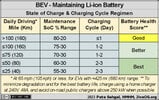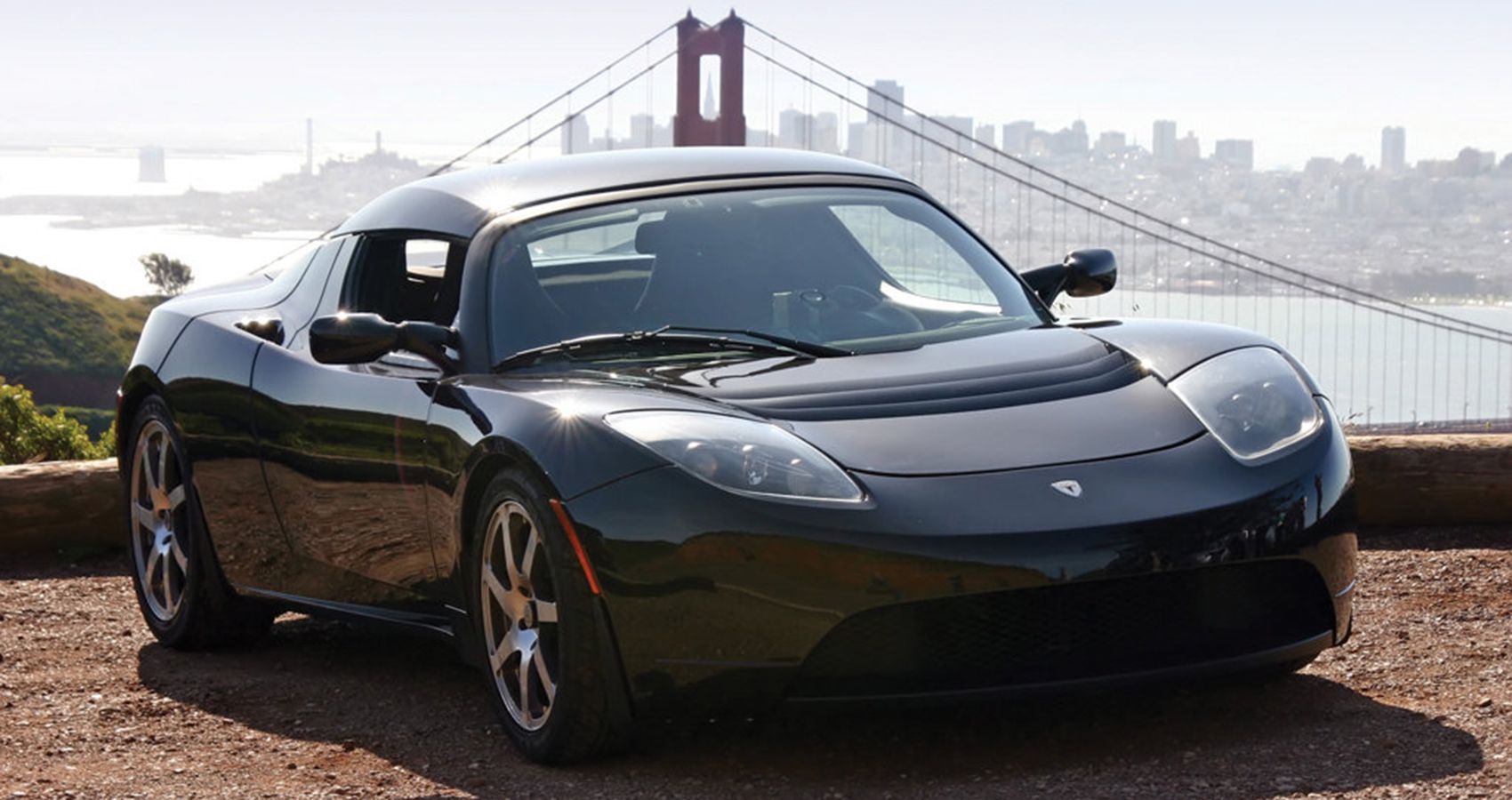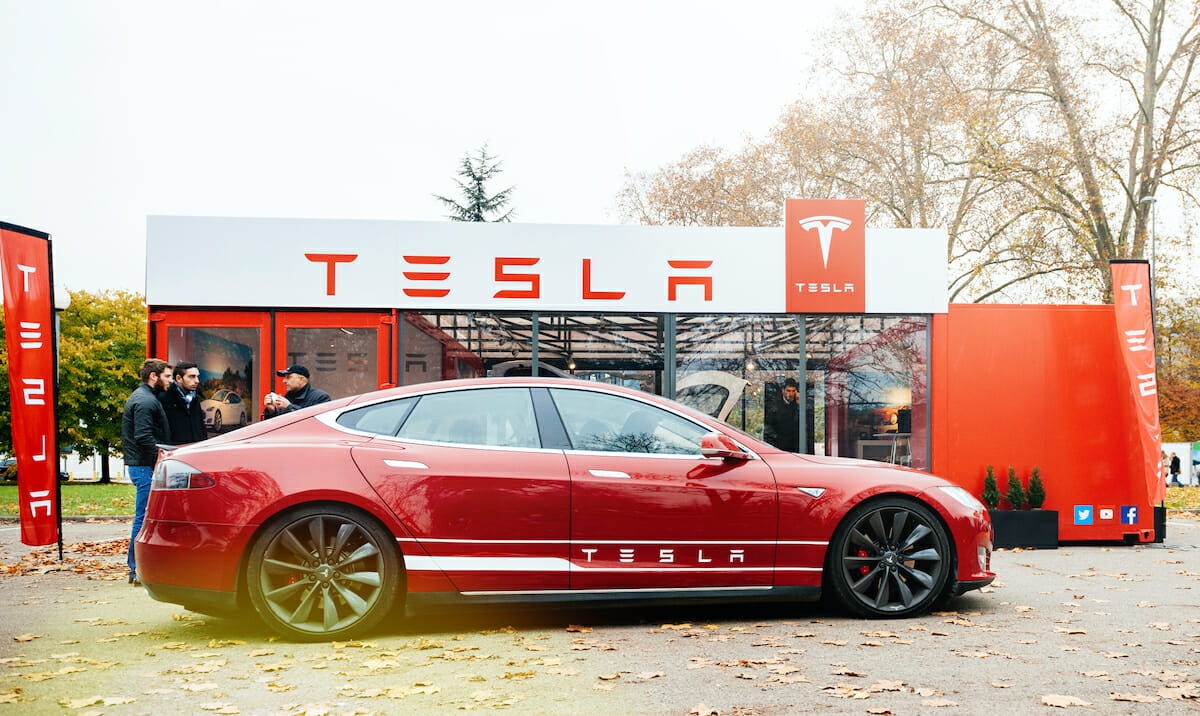For those who want to know what to expect on their road past 10 years and 330 000 km (205,000 miles) with their Model S, here’s our story, especially the last 12 months before returning the car to Tesla.
[TL;DR]: My advice to old/high-milage Model S owners: sell it before it’s too late, because if/when the battery and the motor are both failing, your car is worth peanuts. I suggest not to push your luck much beyond 250 000 km (150,000 miles), although I read about some people having the same kind of problems with lower millage.
Sorry in advance for the long post. Prices mentioned are in Canadian dollars (~0.75 USD).
Having this car has been a great experience and a privilege, as it was the only electric car able to drive 400+ km in the early days, and it was still a pleasure to drive until the end. We had very nice trips with it, including a few in remote areas at a time when it was not so simple to charge, so we sometimes slept in the car while charging on RV plugs in camp grounds. Or highjack 240V heater circuits with my own plugs to be able to charge overnight! Also, we could fit a 30” oven, a dryer, or a double-size mattress in the trunk, to the astonishment of the people we were helping moving!
Of course, it came with some weaknesses, especially the suspension which needed repairs quite often, for a few thousand dollars each time. But we already knew that when we purchased the car: it’s too heavy for its fancy adjustable air suspension. Last repairs involved changing the rear air suspension on both sides less than a year ago. Then the other main weakness: we had about 10-12 door handle problems, 5 of them were changed on warranty, one @ 1300$ by Tesla, the rest using 3-5$ microswitches from Digikey and 2-3h of my time (because I’m slow). We had two charge port replacements, the second one about a year ago (see below). We also had two wiper mechanism changes over the life of the car, the second one less than a year ago, together with the tailgate lift supports. I had to have the main screen changed for 3000$ in 2019, but got reimbursed following the class action. And the heating system failed at some point. I was able to change the unit for used one at 60$ on Ebay and 3-4h of my time, and asked VE|MTL to change the fuse in the DC-DC unit, which was about 400$. (Opening it involves disconnecting cooling fluid hoses and stuff beyond what I can do at home.) I also changed the headlights once. That’s what comes to my mind. Since 2020, most repairs I couldn’t do myself were done at VE|MTL. If you’re in the Montreal area, I strongly recommend this place, where you can talk to the guys who actually repair your car. What a brilliant concept ;-).
Then, starting about a year ago, we started to have all sorts of problems.
Namely because of the battery and motor problems, I could not sell it to anyone. Finding no one interested to part it out for 10-13k$, we accepted the exchange offered by Tesla, and took delivery of brand-new Model 3 SR+. Other 2013 Model S with 200 000 km sell for 25k$, and we’ve put >10k$ in repairs in the last 12 months. Would we have returned the car a year ago, we would have saved about 20k$.
So my advice: sell your old/high-milage Model S before you get into that kind of trouble.
Still, it was a great pleasure to drive it until the end. I’ll miss my Californian car, as I used to call her. After a few days, I’m getting used to the Shanghainese one. Lots of nice features, it drives well, and accelerates well even if it’s “only” a RWD SR+. Regaining some battery range and speed of charge is definitely a relief. But it’s quite stiff, and I miss the comfort of the air suspension of the old one, despite the fact it has been so much trouble.

[TL;DR]: My advice to old/high-milage Model S owners: sell it before it’s too late, because if/when the battery and the motor are both failing, your car is worth peanuts. I suggest not to push your luck much beyond 250 000 km (150,000 miles), although I read about some people having the same kind of problems with lower millage.
Sorry in advance for the long post. Prices mentioned are in Canadian dollars (~0.75 USD).
Having this car has been a great experience and a privilege, as it was the only electric car able to drive 400+ km in the early days, and it was still a pleasure to drive until the end. We had very nice trips with it, including a few in remote areas at a time when it was not so simple to charge, so we sometimes slept in the car while charging on RV plugs in camp grounds. Or highjack 240V heater circuits with my own plugs to be able to charge overnight! Also, we could fit a 30” oven, a dryer, or a double-size mattress in the trunk, to the astonishment of the people we were helping moving!
Of course, it came with some weaknesses, especially the suspension which needed repairs quite often, for a few thousand dollars each time. But we already knew that when we purchased the car: it’s too heavy for its fancy adjustable air suspension. Last repairs involved changing the rear air suspension on both sides less than a year ago. Then the other main weakness: we had about 10-12 door handle problems, 5 of them were changed on warranty, one @ 1300$ by Tesla, the rest using 3-5$ microswitches from Digikey and 2-3h of my time (because I’m slow). We had two charge port replacements, the second one about a year ago (see below). We also had two wiper mechanism changes over the life of the car, the second one less than a year ago, together with the tailgate lift supports. I had to have the main screen changed for 3000$ in 2019, but got reimbursed following the class action. And the heating system failed at some point. I was able to change the unit for used one at 60$ on Ebay and 3-4h of my time, and asked VE|MTL to change the fuse in the DC-DC unit, which was about 400$. (Opening it involves disconnecting cooling fluid hoses and stuff beyond what I can do at home.) I also changed the headlights once. That’s what comes to my mind. Since 2020, most repairs I couldn’t do myself were done at VE|MTL. If you’re in the Montreal area, I strongly recommend this place, where you can talk to the guys who actually repair your car. What a brilliant concept ;-).
Then, starting about a year ago, we started to have all sorts of problems.
- At least three times, the adjustable air suspension got stuck either nose down/tail up, or the other way around. Two instances were due to wires touching each other somewhere under the car, but at different places. The other involved changing the rear air suspension shocks, which qualifies as normal wear.
- The second wiper mechanism change already mention, together with the tailgate lift supports. Let’s put that in the normal wear category.
- Last summer, I was stupid enough to see that the handle of the home charger was overheating but kept using it, until it melted one into the socket. So I ended up having to change both, for nearly 2k$, also about a year ago. The culprit was the home charger since it would not overheat elsewhere. I purchased the charger in 2015 so I guess it’s normal wear.
- During a trip last summer, while crossing a semitruck on a small road, we received a rock in the windshield, which cracked beyond repair. They were still backorder (at least at VE|MTL) when we exchanged the car almost a year later.
- A year ago, the motor started making a slight grinding noise when taking off. Not too much, but it was slowly increasing. It’s due to the windings in the rotor that expand over time and start touching the stator, especially when a lot of current passes through them. Nothing to do but replace it. The guys at VE|MTL told me to just live with it and refrain from accelerating full-throttle. It would not fail abruptly, just degrade slowly up to a point where the motor has to be changed. And it’s sealed/glued in some stuff, so they couldn’t really open it to somehow repair it. (They tried.) Again, normal wear.
- A bearing needed to be replaced 3 months ago, but that one can be considered normal wear.
- The charging power at superchargers, which used to be above 100 kW when the SOC was below 50%, clearly decreased suddenly maybe 2-3 years ago, and continued to decrease down to 60 kW at a SOC of 25%, and 40 kW at a SOC of 50%, lately. This started to make trips significantly longer. And let say that this was not “as advertised”. But I understand.
- For the 10th anniversary of the car (February), we started having a couple of times a series of errors: GTW_w036, ESP_w003, ESP_w002, DI_w124, EPB_w050, GTW_w027, GTW_w104, , GTW_w105, GTW_w025, GTW_037, EPAS_w002, DI_w039. Some of these errors involved having no power steering and power brake of parking brake. But fortunately, they happened close to home or in the driveway. And the errors would go away by themselves or by shutting down the car. That’s until 2 months ago, when it did that in the driveway, without any possibility to shut down the car: the screen would just turn on again immediately, without rebooting. Disconnecting many fuses or even the 12V battery would not solve the problem. At some point, I was momentarily able to put the car in Reverse just before everything failed again. This time, the car remained engaged in Reverse, but still on Park, with no reactions whatsoever from pushing on the stalk. I could feel the car forcing against the Park brakes when pushing slightly on the accelerator. Then I made the error of leaving the car and close the door: since the car thought it was driving (in Reverse), there was no way to access the car again! I finally found that I could semi-open the frunk, then open it with the lever, and then play with the fuses until at some point, I was able to open the tailgate and access the front door from inside to open it. And then leave the window open to be able to access the inside door handle at any time. At this point, the car would remain in Reverse (but with the parking brakes on) despite disconnecting the 12V battery or playing with the stalk during the boot sequence after reconnecting the 12V battery. Obviously, this was a Friday PM, and VE|MTL were closed until Monday, so the car basically remained on Reverse all weekend. No way to charge it because the car thought it was driving, but the SOC was relatively high, and I disconnected the fuse of most subsystems, central screen, headlights, etc. so there was little power consumption. The cherry on the sundae: the car was stuck in front of our garage door where the other car was. What a nightmare!! At that point (and because of what comes next), I was ready to bring the car to the scrap yard, if ever they wanted it. Monday finally came, I had the car towed on a platform (still on Reverse!) to VE|MTL. They realized that it was the TPMS antenna (1st generation Baolong) that had failed and was bringing down several other subsystems with it. They just disconnected it: problem solved! But this and the wire degradation mentioned above and other repairs are signs that this Californian car is not built for areas using salt on roads during winter, and that the car was suffering from corrosion at several places, while not apparent since the body is made of aluminum.
- Then, the last (and biggest) nail in the coffin: the battery. Last summer (2022), while on a trip in the Maritimes, we ran out of batteries with 7 km of range at some point, 300 m away from a supercharger. I already had that 2-3 years ago at 4 km, but before that, I drove the car a few times down to 1-2 km or range before charging without problems. At the time of the 4-km failure, we were told by Tesla not to go below 10 km of range anymore, so my bad going down to 7 km. Then 2 months ago, I went from Montreal to Chicago and back. During the trip, I arrived at superchargers with 15 km of range a couple of times without issue. But on my way back, at the top of a not-so-steep but long hill in Ontario, the car decided to stop with *30 km* of range left, and 10 km away from the next charger. After being towed to the supercharger, I could reach home without further issues, although not going below 60 km of range anymore! The next day, we did another 400 km trip without trouble. But the next morning, surprise: “Max charge level reduced. OK to drive. Schedule service” (BMS_u029). This is bad, and basically means you have to replace the battery. A refurbished one is 27k$, with was out of the question, given the age of the car and the other problems. Following a discussion with the guys at VE|MTL (whom I appreciate very much, did I mention), we concluded that it was not worth trying opening the battery to find the defective modules, as this would cost several thousand dollars of their time. One thing they could do though is to downgrade the software/firmware to a version from 2020, which is more tolerant to battery degradation. That’s what I opted for. Now this smells like post-programmed obsolescence, just after the 8-year warranty is over. But I guess Tesla would argue they do that to avoid batteries catching fire or whatever. And anyway, the battery had clearly entered its fast degradation regime, see below.
- One last problem showed up (did I need it): the central screen was becoming very slow, up to a point where it would not turn on anymore. It happened to be a problem with the SD card on the central compute, which contains the navigation maps. Given that we already ordered the new car, VE|MTL just removed it, which means we could still see the map on the screen with the traffic, etc., but navigation would not work. I was fine with it, could use a phone instead, and figure out myself how much range I would need for a trip, especially given that the car would not take into account that it could not go below 15% SOC anymore.
Namely because of the battery and motor problems, I could not sell it to anyone. Finding no one interested to part it out for 10-13k$, we accepted the exchange offered by Tesla, and took delivery of brand-new Model 3 SR+. Other 2013 Model S with 200 000 km sell for 25k$, and we’ve put >10k$ in repairs in the last 12 months. Would we have returned the car a year ago, we would have saved about 20k$.
So my advice: sell your old/high-milage Model S before you get into that kind of trouble.
Still, it was a great pleasure to drive it until the end. I’ll miss my Californian car, as I used to call her. After a few days, I’m getting used to the Shanghainese one. Lots of nice features, it drives well, and accelerates well even if it’s “only” a RWD SR+. Regaining some battery range and speed of charge is definitely a relief. But it’s quite stiff, and I miss the comfort of the air suspension of the old one, despite the fact it has been so much trouble.





